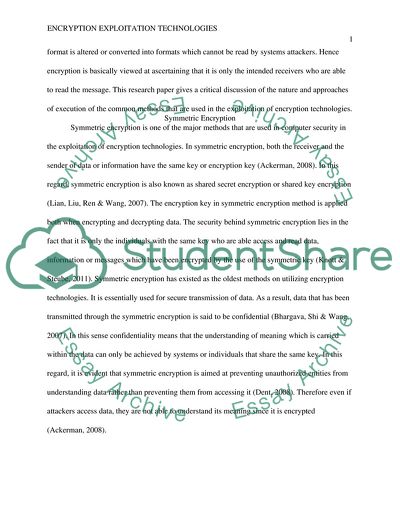Cite this document
(The Nature of Encryption Exploitation Technologies Coursework Example | Topics and Well Written Essays - 1500 words - 1, n.d.)
The Nature of Encryption Exploitation Technologies Coursework Example | Topics and Well Written Essays - 1500 words - 1. https://studentshare.org/information-technology/1780227-encryption-exploitation-technologies
The Nature of Encryption Exploitation Technologies Coursework Example | Topics and Well Written Essays - 1500 words - 1. https://studentshare.org/information-technology/1780227-encryption-exploitation-technologies
(The Nature of Encryption Exploitation Technologies Coursework Example | Topics and Well Written Essays - 1500 Words - 1)
The Nature of Encryption Exploitation Technologies Coursework Example | Topics and Well Written Essays - 1500 Words - 1. https://studentshare.org/information-technology/1780227-encryption-exploitation-technologies.
The Nature of Encryption Exploitation Technologies Coursework Example | Topics and Well Written Essays - 1500 Words - 1. https://studentshare.org/information-technology/1780227-encryption-exploitation-technologies.
“The Nature of Encryption Exploitation Technologies Coursework Example | Topics and Well Written Essays - 1500 Words - 1”. https://studentshare.org/information-technology/1780227-encryption-exploitation-technologies.


